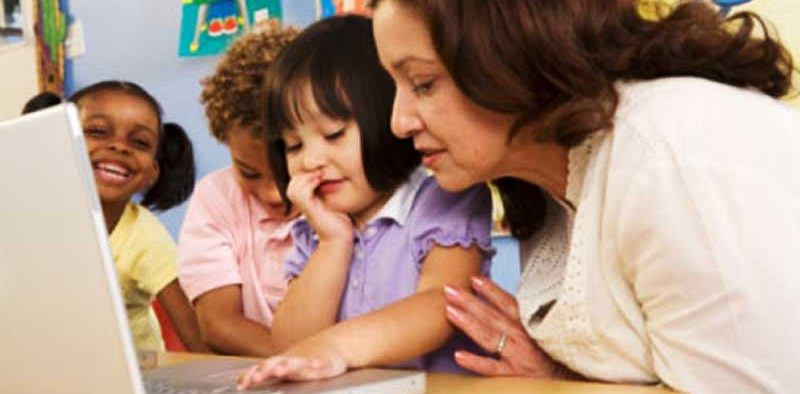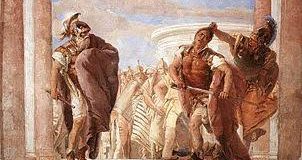What is TEACHING? THINGS YOU NEVER KNEW!!!

What is Teaching?
As students, this is not a foreign word to us. From an early age, humans are continuously engaged in the process called teaching. As kids, we do not know the proper definition but experiencing the situation i.e. going to school, sitting in the classroom and following the instructions of the adult in the room, etc. helps us to internalize the meaning of it. However, the question remains. What is teaching and how can we differentiate it from other processes? Are there any qualities of teaching that can help us to understand it as a process rather than an internalized situation? In the following paragraphs, all these questions will be answered.
First of all, let’s take a look at what dictionaries have to say about the meaning of “teaching”. According to Merriam-Webster: Teaching is “the act, practice, or profession of a teacher” (“Teaching”, n.d.). Therefore, the teaching process is strictly related to the occupation of a teacher. Robert J. Havighurst asserts that it is “the profession of those who give instruction, especially in an elementary school or a secondary school or in a university”.
Therefore, we can quickly understand that teaching is a profession that a person has. In this profession, the “teacher” must impart instructions and knowledge to a group of individuals called “learners” in a particular, sophisticated environment that can fulfill the needs of the teaching-learning process. For example, when a teacher gives the learners some instruction on how to wear their scientific gear properly, this is teaching. When a teacher shows the students a plant and explains how photosynthesis occurs, this is also teaching.
Nature of Teaching—Characteristics and Qualities
After we have established what teaching is, now it is time to discuss the characteristics of teaching. What do we mean by characteristics? Here, we seek to discover special features that belong to the teaching process. These identifying features are mentioned below:
1.Interaction between students and teachers: In a classroom or any educational environment, the teacher and learner establish a close, intimate relationship. The teacher imparts knowledge to the students. These learners, in return, ask questions and give motivation and encouragement to the teacher. When the learners perform well on exams and tests, this motivates them and the teachers and they both achieve a common goal, learning.
2.Provision of guidance and training: When a child first engages in this complex process, he/she is very young, inexperienced, unskilled, and unacquainted with the various stimuli in their surroundings. To give them an understanding of how the world works, teachers provide guidance and training. They teach them essential manners and skills i.e. how to talk to elders, how to sit properly in a classroom, how to read and write, how to treat their classmates, etc. Therefore, any learned person owes a great debt to her teacher for teaching her the indispensable prowess that she has learned throughout the teaching-learning process.
3.A continuous process: One thing that separates teaching from other processes is that it is an ongoing affair. It starts at the very early stages of childhood and ends only at death. We continue to learn and teach in every aspect of our lives. However, as we get older, this process is no longer restrained to the classroom. It can be done anywhere i.e. on a bus, inside a home, in the park, or just passing by on the street. This process is ubiquitous.
4.Encouragement to learn more: Teaching, when done effectively, encourages learners greatly. They feel more confident in themselves and try out new things. This promotes further learning. The famous quote goes: Never stop learning because life never stops teaching. Similarly, a learner will be able to learn more (informally and formally) if they are genuinely interested and if they had a good learning experience when they were younger. For example, when a learner has a good relationship with his teacher and also enjoys learning, he will be motivated to continue his education and pursue higher studies.
5.Productive tool in society: Teaching acts as a productive tool to enhance society. Thru the teaching-learning procedure, individuals become profitable, successful, innovative, and fecund. They bring new ideas and opportunities and improve the current ills of the community. Education is one of the most fundamental units of society and teaching allows society to prosper as a whole, leading to more conveniences and happier plus comfortable lifestyles. For example, a learner studies biology in high school, and because of the effective teaching-learning process, he comes up with new ways to make test-tube babies or improvise solutions for weeds in gardens. With education, one can go very far and benefit not only himself but also the people around him.
What Differentiates Teaching from Other Processes?
Now, the question arises, how is teaching different from other activities and procedures? In our explanation, we will provide a few examples but this list is by no means exhaustive. Teaching is a unique process; a polymorphous activity. Unlike gardening and driving which include special aspects and restrictions, teaching is all-encompassing.
Any activity is deemed an activity by the intention of its doer. “What a particular activity is, what a person is doing, depends crucially on how he sees the activity” (Hirst, 1971). He further exemplifies the action of a person swirling the contents of a mug and raising it to his lips. Now, the common explanation is that he’s drinking something or satisfying himself with that liquid. But, what if the intentions of the performer were different? What if he was trying to ignore the conversation taking place around him? What if the contents of the mug were poison and he was trying to commit suicide?
It is easy to state the present physical situation but the intentions of the performer are more difficult to observe and analyze. Let us take the example of cooking. It’s an action in which one hovers above the stove or some other electronic appliance and puts edibles in a pot or wok. Cooking intends to later eat the food that the person is preparing. If someone prepared the food but did not eat it, then the whole process may be questioned as cooking or not.
Similarly, teaching is also seen as a procedure based on the intentions of the teacher. Since all teachers have one common purpose, to allow learning in the students, therefore, teaching is a process that promotes learning. Both processes are dependent on each other; one cannot exist without the other.
Hirst (1971) emphasizes that “there is no such thing as teaching without the intention to bring about learning”. Let us take an example of an incompetent teacher. Instead of planning and sticking to the module, he laments childhood memories to the students. These memories are in no way connected or even relatable to the students. The intention of the teacher is not for the students to learn anything but just to listen to him talk about his past. Therefore, this is not teaching.
ALSO READ: PEDAGOGY, COOPERATIVE LEARNING, YELLOW WALLPAPER
In another example, a teacher walks into the classroom and asks the students to recite the multiplication tables to her. She listens and looks for mistakes. She intends to see if every child has grasped the concept and understands how multiplication works. Therefore, since her intention is focused on the learning of the students, she is engaged in the teaching process.
Conclusion
Consequently, teaching is a complex process. It depends on learning, without which it is incomplete and can be questioned and challenged. Like any other activity, it depends on the motive of the performer. Teaching has a few characteristics that we can use to identify it with. These include the provision of guidance and training, promotion of further learning, a tool to become productive members of society, a continuous process, and the intimate relationship between students and teachers. Teaching, conventionally, is limited to classrooms and formal methods but these days, it can occur at any time, at any place. This is what makes it so ubiquitous and special.
Interested in POETRY? CLICK HERE!
CHECK THIS BEFORE YOU GO!
Currently, I am a student of Fatima Jinnah Women University. With a burning passion for psychology, words, and dreams, I decided to abandon medical studies for humanities. These days, when I’m not listening to ballads, watching movies, or sitting down with a good novel, I am rigorously studying Hangul (Korean language) to satisfy my obsession for BTS and K dramas. I’m a thinking introvert and INFJ personality. Therefore, I like ‘me time’. My articles typically resonate with psychological well-being advice.









